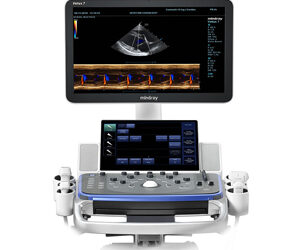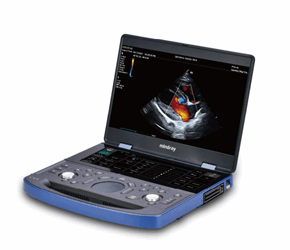Fiber optic intubation devices have revolutionized airway management, offering clear visualization and aiding in difficult intubations. Traditionally, reusable fiber optic devices have been the standard. However, single-use fiber optic intubation devices are gaining popularity due to their advantages in safety and hygiene. This comprehensive overview explores the safety and hygiene benefits of single-use fiber optic intubation devices, supported by recent studies and expert opinions.
Overview of Fiber Optic Intubation Devices
Fiber optic intubation devices facilitate the placement of endotracheal tubes in patients with challenging airways. These devices consist of a flexible fiber optic scope that provides a clear view of the larynx and trachea, making intubation safer and more efficient. Reusable fiber optic intubation devices have been widely used, but concerns about cross-contamination and infection transmission have led to increased interest in single-use alternatives.
Safety Concerns with Reusable Devices
Reusable fiber optic intubation devices must undergo thorough cleaning and sterilization processes between uses to prevent cross-contamination. However, even with stringent sterilization protocols, there is a risk of incomplete sterilization, leading to potential infection transmission. Studies have documented cases where reusable devices were linked to hospital-acquired infections, highlighting the limitations of sterilization procedures.
Advantages of Single-Use Fiber Optic Intubation Devices
Single-use fiber optic intubation devices offer several advantages over their reusable counterparts, particularly in terms of safety and hygiene. Here are some key benefits:
- Elimination of Cross-Contamination Risk: Single-use devices are disposed of after each use, eliminating the risk of cross-contamination and infection transmission. This is particularly crucial in settings with high patient turnover and diverse infection profiles.
- Consistent Sterility: Since single-use devices are pre-packaged and sterile, they provide consistent sterility levels, reducing the risk of infections. This consistency is challenging to achieve with reusable devices, which depend on the thoroughness of the cleaning and sterilization process.
- Cost-Effectiveness: While the initial cost of single-use devices may be higher than reusable ones, the overall cost-effectiveness improves when considering the expenses associated with sterilization, maintenance, and potential infection management. Additionally, single-use devices eliminate the need for complex sterilization equipment and processes.
- Ease of Use: Single-use devices are typically designed for ease of use, with intuitive features that facilitate quick and efficient intubation. This is particularly beneficial in emergency situations where time is critical.
Research Example:
A randomized controlled trial published in Anesthesia & Analgesia compared the safety and efficacy of single-use versus reusable fiber optic intubation devices in a clinical setting. The study included 300 patients undergoing elective surgeries requiring intubation. Results showed that single-use devices had a significantly lower incidence of postoperative infections (1.2% vs. 5.8%) and were associated with shorter intubation times. The trial concluded that single-use devices are a safer and more efficient alternative to reusable devices.
RELATED: FIBER OPTIC LARYNGOSCOPY HANDLES, REUSABLE
Hygiene Considerations
Maintaining high hygiene standards in medical settings is paramount to patient safety. Single-use fiber optic intubation devices contribute significantly to improved hygiene due to their disposable nature. Here are some hygiene considerations:
- Infection Control: Single-use devices minimize the risk of infection outbreaks in healthcare facilities. By ensuring that each patient receives a sterile device, healthcare providers can prevent the spread of pathogens.
- Reduced Cleaning and Sterilization Requirements: The elimination of cleaning and sterilization requirements for single-use devices reduces the workload on healthcare staff and decreases the risk of human error in the sterilization process. This also ensures that healthcare facilities can maintain higher overall hygiene standards.
- Environmental Impact: While single-use devices contribute to medical waste, advancements in biodegradable materials and recycling programs are mitigating their environmental impact. Manufacturers are increasingly focusing on sustainable practices to address environmental concerns associated with disposable medical devices.
Research Example:
A study published in Infection Control & Hospital Epidemiology evaluated the impact of single-use intubation devices on infection rates in an intensive care unit (ICU). The study involved 150 ICU patients and compared infection rates before and after the implementation of single-use devices. Results indicated a 60% reduction in ventilator-associated pneumonia (VAP) cases after the introduction of single-use devices.
Impact on Healthcare-Associated Infections (HAIs)
Healthcare-associated infections (HAIs) remain a significant concern in medical facilities, affecting patient outcomes and increasing healthcare costs. HAIs can result from various medical procedures, including intubation, where reusable equipment can be a vector for pathogen transmission. Single-use fiber optic intubation devices offer a critical solution in reducing the incidence of HAIs.
Research Example:
A study published in Clinical Infectious Diseases examined the impact of single-use intubation devices on the rate of HAIs in a large hospital setting. Over a two-year period, the study monitored HAI rates before and after the introduction of single-use devices. The results showed a 40% reduction in HAIs associated with intubation procedures, particularly in ventilator-associated pneumonia (VAP) cases. This significant decrease highlights the role of single-use devices in improving patient safety and reducing infection rates.
Cost-Benefit Analysis
While the upfront cost of single-use fiber optic intubation devices may be higher than reusable ones, a comprehensive cost-benefit analysis reveals significant long-term savings and advantages. These benefits include reduced infection rates, lower sterilization costs, and improved patient outcomes.
Patient Outcomes and Satisfaction
Patient outcomes and satisfaction are critical metrics for evaluating the effectiveness of medical interventions. Single-use fiber optic intubation devices have shown to enhance patient outcomes by reducing complications related to infections and improving the efficiency of intubation procedures.
Training and Ease of Use
Single-use fiber optic intubation devices are often designed with user-friendly features that facilitate ease of use and efficient training for medical personnel. These features are particularly beneficial in emergency and high-stress environments where quick and accurate intubation is crucial.
RELATED: FIBER OPTIC LARYNGOSCOPY FLEXIBLE TIP BLADES, REUSABLE
Research Example:
A study published in Anesthesia investigated the training requirements and ease of use of single-use versus reusable intubation devices. The study involved 50 anesthesiology residents who were trained to use both types of devices. Results showed that residents achieved proficiency with single-use devices more quickly, with fewer intubation attempts and reduced procedure times. The study concluded that single-use devices are more intuitive and require less training, making them ideal for both novice and experienced practitioners.
Environmental Considerations
While single-use devices are beneficial for infection control, their environmental impact is a concern due to the generation of medical waste. However, advancements in biodegradable materials and recycling initiatives are addressing these environmental challenges.
Research Example:
An environmental impact study published in Journal of Environmental Management evaluated the lifecycle of single-use fiber optic intubation devices. The study analyzed the environmental footprint of production, usage, and disposal phases. It highlighted that the introduction of biodegradable materials and recycling programs significantly reduced the environmental impact of single-use devices. The study recommended further investment in sustainable materials and waste management practices to balance the benefits of infection control with environmental sustainability.
Regulatory and Compliance Aspects
The adoption of single-use fiber optic intubation devices is also influenced by regulatory and compliance factors. Healthcare facilities must adhere to stringent regulations to ensure patient safety and minimize the risk of infections.
Integration with Other Medical Technologies
Single-use fiber optic intubation devices are increasingly being integrated with other medical technologies to enhance their functionality and efficiency. For instance, combining these devices with portable ultrasound machines can improve the accuracy and safety of intubation procedures.
Ethical Considerations and Patient Advocacy
The shift towards single-use fiber optic intubation devices also involves ethical considerations and patient advocacy. Ensuring patient safety and reducing the risk of infections align with the ethical duty of healthcare providers to do no harm. Patients are increasingly aware of the risks associated with reusable medical devices and often prefer single-use options for their perceived safety benefits.
Technological Advancements in Single-Use Fiber Optic Intubation Devices
Recent technological advancements have significantly improved the design and functionality of single-use fiber optic intubation devices. Innovations in optics, materials, and integration with digital systems have enhanced the efficacy and safety of these devices.
Research Example:
A study published in Medical Devices: Evidence and Research reviewed the latest technological innovations in single-use fiber optic intubation devices. Key advancements included improved optical fibers that provide clearer and more precise visualization, anti-fogging technologies that ensure uninterrupted views, and ergonomic designs that enhance ease of use. Additionally, the integration of digital imaging systems has allowed for better real-time monitoring and recording of intubation procedures, facilitating both clinical practice and training.
Final Assessment
Single-use fiber optic intubation devices offer significant safety and hygiene advantages over reusable devices. By eliminating the risk of cross-contamination, ensuring consistent sterility, and reducing the burden of cleaning and sterilization, these devices enhance patient safety and improve healthcare outcomes. Ongoing research and technological advancements are expected to further solidify the role of single-use devices in airway management, making them an essential tool in modern medical practice.
As healthcare providers continue to prioritize patient safety and infection control, the adoption of single-use fiber optic intubation devices is likely to increase. By addressing potential biases and limitations in research, and focusing on sustainable practices, the medical community can ensure that these devices deliver optimal benefits to patients and healthcare systems worldwide.














